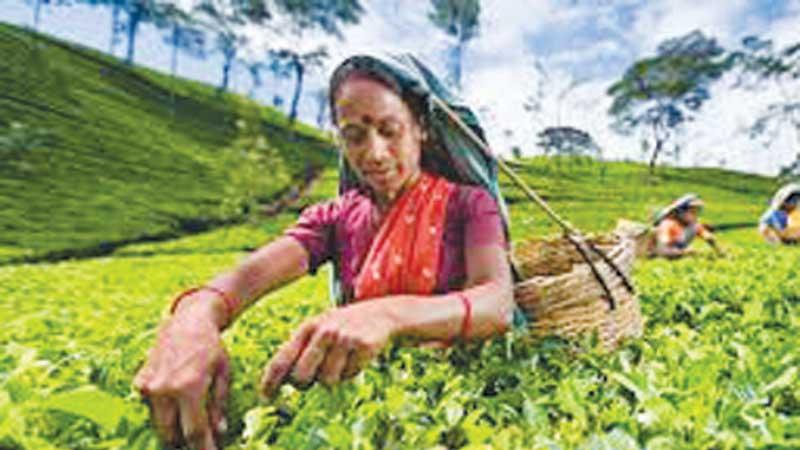
Plantation workers continuing to enjoy the Rs. 1,000 daily wage approved by the Wages Board hangs in the balance as a court verdict on the sustainability of the wage hike is expected shortly.
Plantation companies sought legal redress to the new wage structure approved by the Wages Board.
A spokesman for the Planters’ Association of Ceylon (PA) said the Association had to seek relief from courts as the wage increase is not viable given the high cost of production and sharp dip in global tea prices for several years. “We have honoured the decision of the Wages Board by granting the Rs. 1,000 wage hike to workers who would be better off under the Collective Agreement,” said PA Chairman Bhathiya Bulumulla. Regional Plantation Companies (RPCs) have been calling for a new wage structure based on productivity that would enable workers to earn a higher daily wage. The Wages Board decided to raise the daily wage of plantation workers to Rs. 1,000 following several rounds of discussions with the parties concerned. The decision came after the tripartite collective agreement between the RPCs, unions and Labour Ministry lapsed at the end January.
The possibility of negotiating a fresh collective agreement with a welfare component was proposed by the Labour Commissioner General.
However, according to representatives of the ‘Rs. 1,000’ Movement which has been supporting the claim for a decent wage for workers, the Rs. 1,000 wage which is hardly adequate to meet the rising cost of living should be further increased in line with the staggering cost of living that has burdened the entire country.
“We expect the government to at least stick to the recent wage revision if it is unable to take into account the cost of living that has skyrocketed in recent times,” Rev. Fr. Sathyavel of the Rs. 1,000 Movement said.
The sudden transition to organic fertiliser usage has added insult to injury for the plantation sector which is in a fix today due to the absence of organic and inorganic fertiliser.
The tea smallholder sector which accounts for over 70% of the country’s tea production is one of the most affected sectors due to the shortage of fertiliser.
The tea smallholder sector comprises approximately 500,000 land owners, spread across 138,900 hectares, 14 districts, and 123 District Secretariat Divisions and 3,692 Grama Niladhari Divisions, and is deeply connected to rural economies in over 5,000 villages, and approximately 20% of the island’s rural population.
“We are keen to support the Government’s vision, but we need a practical plan to achieve it, that also clearly ensures the wellbeing of all tea smallholders, and the wider industry,’ Sri Lanka Federation of the Tea Small Holders Chairman K.L. Gunaratne said. According to Gunaratne, most tea smallholders have been deprived of fertiliser for over two months, and there are some who were already facing difficulties in acquiring fertiliser even prior to the import ban, and as a result have not applied fertiliser for the whole of 2021.
For most in our sector, tea is their only significant source of income and with the drastic increase of cost of living consequent to the impact of Covid-19, these communities are now facing the most extreme pressure yet.
“We have approximately 1.5 million individuals whose families depend on this industry to pay for food, medicine, and education of their children. With the ongoing absence of fertiliser, tea smallholders are fearful and many are calling for the entire sector to take to the streets. They need reassurance, and they need solutions urgently,” he said.
Fertiliser shortages and drastic price hikes for available stocks have been reported across Sri Lanka following the announcement of a total ban on import and use of inorganic fertiliser.
The ban was announced as part of a decision to rapidly convert the island’s entire agriculture and plantation economy into total organic cultivation.
